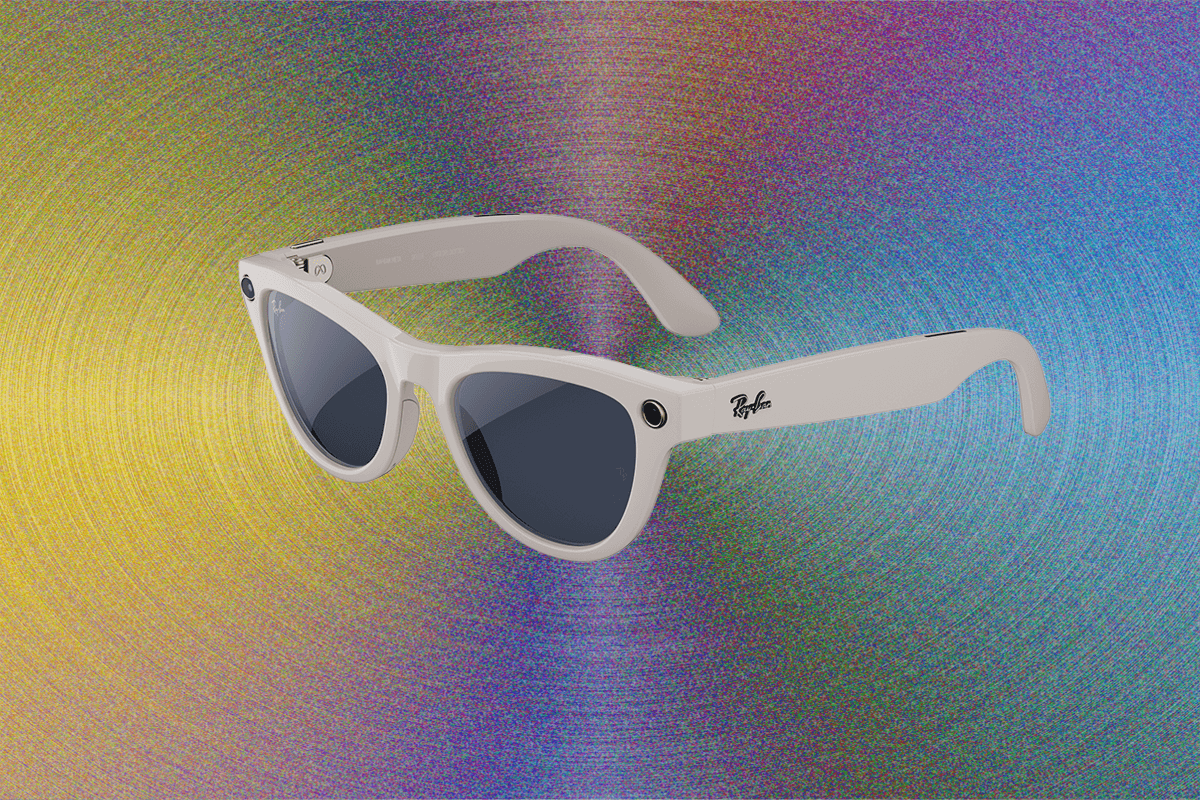The Ray-Ban Meta Gen 2 glasses are very good smart glasses. If you’re into face computers, these will do what you want them to do. They snap pictures, record video, play music, and take calls. You can use AI voice commands to find your way around, translate foreign languages live, or inquire about what kind of spider happens to be dangling right in front of your face at the moment.
The $379 frames are Meta’s entry-level smart glasses, and a direct successor to the original that became a smash hit. They are $80 more expensive than their predecessor, but what you get in return is a better 12-MP camera capable of capturing photos and videos at up to 3K resolution. There are also options for recording up to 60 frames per second and shooting videos in slow motion. Battery life also gets a big bump, extending to 8 hours of various use, but more like 5 or 6 with constant use or less if you’re recording high-def video the whole time. (The glasses record a maximum of three minutes at a time.)
For most people, the affordability and relative simplicity of the Gen 2 frames are going to make them the most appealing Meta glasses. They don’t have quite the GoPro-esque camera capabilities of the $499 Oakley Meta Vanguards, which my colleague Adrienne So liked a lot. They also don’t have a display in the lens, like the $799 Meta Ray Ban Display. (We have not been able to review the Display glasses yet because Meta said it prioritized sending review units to “creators,” i.e., influencers.)
Glass Ceiling

Photograph: Boone Ashworth
I have been using the Gen 2 smart glasses for about a month. Meta handed them out for free to the journalists and influencers at its Connect developer event in Palo Alto in September, and I’ve been wearing them since then. These feel a lot like the previous pair of Ray-Ban Meta glasses I’ve used. They weigh about the same, offer many of the same visual styles, though there are a few new colors to choose from. (I got cosmic blue.)
Music playback on the frame’s speakers sounds fine, but I still prefer wireless earbuds for something I actually want to listen to. Podcasts and phone calls sound great, though—voices seem to shine on the glasses. The touch controls along the sides of the frames work well enough, which is nice considering oversensitive touch controls on wearables can often trigger an unintended reaction like accidentally pausing a track or changing the volume.
The glasses are lightweight compared to the face computers of the past, but they are heavy enough to leave deep red divots on either side of the bridge of my nose after a couple of hours of wearing them. This is probably a skill issue, since I don’t have prescription lenses and normally just wear sunglasses.
It’s a petty peeve, but I much prefer polarized lenses, which Meta doesn’t offer. At least you can get them with Transitions lenses, which is what I tested. Those do a good job of reacting to the light, but I find they don’t ever feel quite dark enough to keep me from squinting on a sunny day.
As I wore them on one of my walks through San Francisco, on the shore of Ocean Beach, I came upon a dolphin-like fish that had washed up on the sand. Though I got my camera glasses close enough to the thing that I could smell it, Meta’s AI assistant could not tell me what kind of animal it was. It correctly identified that it was very dead and that I should not touch it. It was then able to direct me to a number to call for city animal control services.
Beyond instances like that, I tend to avoid the AI voice interaction because I haven’t gotten to the point where it feels natural. Getting it to search something is usually very quick, but doing so requires you to stop dead in your tracks, stare directly at another person’s purse or something, and say out loud, “Hey Meta. HEY META. Is this bag Gucci?”
The glasses’ AI features are both its best asset and biggest weakness. Features like live language translation and whispered map directions are very helpful. But if you’ve spent any time curating the AI slop out of your Facebook feed lately, you’ll know that Meta just can’t help pack a firehouse blast of AI features into everything it does.
The software features are funneled through the same app as Meta’s AI services. That’s where pictures and videos go by default, and sometimes you have to go into the app to import the files from the glasses. There’s a very clear problem with using the app: bad vibes.
The Vibes Are Off
When you go into the Meta AI app to look at the pictures or videos you’ve taken, the first thing you’ll see is Meta’s terrible new Vibes service; a constant barrage of AI slop videos that Meta just one day foisted upon its app users. Vibes is akin to OpenAI’s dubious Sora app, but somehow even worse quality.
Photograph: Boone Ashworth
Meta AI
Every time I try to go find a picture I’ve just taken with my glasses of some cute dog, I first have to swipe past AI slop. If I’m lucky, it’s a bunch of uncanny AI cats riding motorcycles or dancing to hip hop beats. If I’m unlucky (usually the case), it’s a bunch of cringey political videos, like AI Obama getting arrested by ICE or one where an AI President Trump lookalike leans over a visibly pregnant Statue of Liberty who also seems to be giving birth to an egg. It’s such a shift from the things that the glasses do best, which is to let you capture and interact with the real world.
Vibes is a service I wish I could opt out of by launching it straight into the sun, but unfortunately, it has become an inescapable part of my Meta Ray-Ban software experience. The thing all of Meta’s glasses do really well is remind you that you’re wearing a device made by Meta, a company that has a long history of playing hot potato with user data and a leader who has displayed increasingly craven capitulation to power.
The glasses are great, but I find myself feeling hesitant to wear them around in public. I get more double takes and suspicious looks on the bus than I’ve noticed before. To be fair, that might just be aesthetics, as I’ve been told by almost all my friends that my face doesn’t take to square glasses well. (“You just look wrong,” one told me while I wore the glasses in a restaurant.)
Fashion aside, these devices are in a fraught place. Privacy rights and the absolute explosion of surveillance tech are much harder to ignore these days. Especially as people buy mod kits to disable the indicator light on the Meta glasses that let people see when the Meta glasses are recording, or use their glasses to record themselves harassing workers in massage parlors.
I’m not saying these are glasses for creeps, but I can’t help but feel like one while wearing them.







